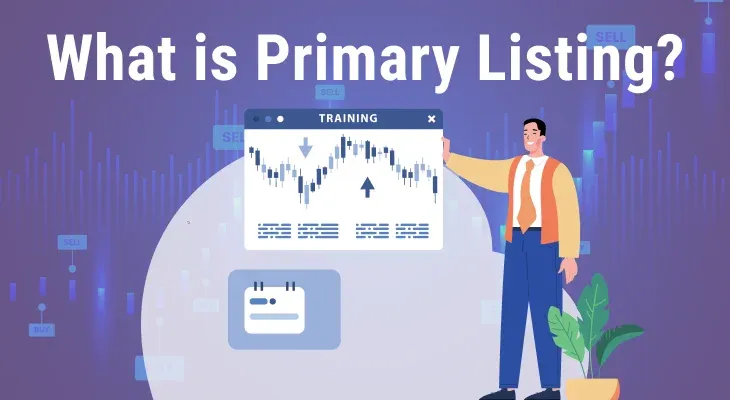
Primary Listing and its benefits
Once a company raises funds through an Initial Public Offering, it lists its shares on a stock exchange. This facilitates easy and seamless trading of shares between investors. Market experts often use the term ‘primary listing’ to refer to companies that list shares on an exchange for the first time. As an investor, you need to know what this term means and how primary listing works in the real world. Here’s a detailed overview.
What is Primary Listing?
The term primary listing is used when a company lists its shares on a stock exchange for the first time. This listing of shares on an exchange happens only at the end of an Initial Public Offering (IPO). For a company to successfully go through a primary listing, it has to meet certain stringent criteria set by the stock exchange on which it plans to list its shares.
How does Primary Listing work?
Let’s take up a hypothetical example to understand how primary listing works. Assume there’s a company - ABC Limited. It plans to raise funds to the tune of ₹100 crores by issuing 10 lakh equity shares at ₹1,000 per share to the public via an IPO. The public issue gets subscribed fully and the shares are all credited to the investors’ demat account.
To make it easier for investors to purchase and sell their shares publicly, the company lists its shares on a stock exchange, namely the Bombay Stock Exchange (BSE). Since it is the first time that ABC Limited is getting its shares listed on an exchange, it is said to have gone through a primary listing.
Primary Listing and Secondary Listing
The concept of a primary listing is very popular in the U.S. There, companies that go through an IPO usually list their shares only on one exchange. Take the case of Amazon, for instance. After the company’s widely successful IPO, its shares were listed on the NASDAQ for the very first time. This is what is known as the primary listing.
On the other hand, a company is said to have gone through a secondary listing when it lists its shares on a second stock exchange. Let’s take the case of Amazon once again. If the company decides to list its shares on the other major U.S. stock exchange - the NYSE (New York Stock Exchange), it would have gone through a secondary listing.
Primary Listing and Dual Listing
In India, however, a primary listing is quite rare. Companies rarely list their shares on a single stock exchange. In fact, the shares of most mainboard IPOs are listed on both the primary stock exchanges of the country - the Bombay Stock Exchange (BSE) and the National Stock Exchange (NSE) simultaneously. This is known as dual listing.
Advantages of Listing on an Exchange
Exchange listing offers several advantages to both companies and their investors. Here’s a quick overview of some of the key advantages.
Makes Trading Easier
All stock exchanges throughout the world support electronic trading. This makes purchasing and selling the shares of a company much quicker and more seamless when they’re listed on a stock exchange.
Increases Liquidity
As more investors buy and sell the shares of a company through an exchange, the liquidity in the counter goes up.
Offers Investors An Exit
Investors of the company can exit their holdings at any point in time by selling their shares on an exchange.
Increases Company Visibility
A company whose shares are listed enjoys greater visibility than one that isn’t present on an exchange. Furthermore, a listed company is usually viewed as being more trustworthy as well.
Attracts Better Talent
Due to their enhanced visibility, listed companies often find it easier to attract and retain highly-skilled talent. This enables them to grow at a much faster rate.
Makes It Easier To Raise More Funds
Once the shares of a company are listed on an exchange, raising more funds via Follow-On Public Offerings (FPOs) becomes a lot easier.
Conclusion
To sum up, a primary listing is when a company lists its shares on a stock exchange for the first time. This is usually achieved through an Initial Public Offering (IPO). However, in India, most companies opt to go for dual listing. This is because the listing criteria of both the premier exchanges in the country are very similar. Additionally, it offers better visibility and enhances liquidity as well.
Speaking of primary listing and IPO, if you’re interested in investing in public issues of companies, m.Stock may be of assistance. With our 1-click order placement feature, you can invest in all the latest IPOs in no time. Additionally, with m.Stock, you also get to enjoy zero brokerage trades on equity delivery, mutual funds and IPOs.

